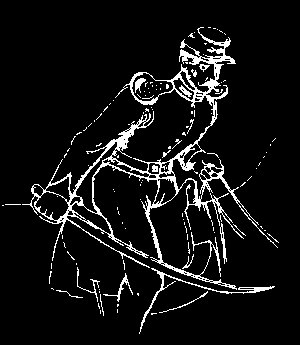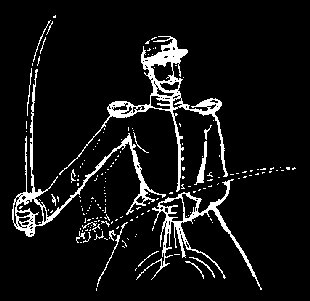




Cavalrymen needed to learn how to fight on foot as well as horseback. Particularly during the early days of the war, the Union treated much of its cavalry wing simply as mounted infantry.
The pages reproduced here come from the conclusion of the manual, and represent the "School of the Squadron, Mounted." Some of the information seems self-evident ("in the charge, as in every other direct march, it is important to keep the horses straight") but when educating new recruits, little can be taken for granted!
The final note in the section is sobering. Dashing the gallant notion of the cavalryman as a noble warrior pursuing glory, the comment suggests the grimmer face of war: "generally the skirmishers should charge with the revolver; they have the sabre for the last resort."




� 1997 [email protected]